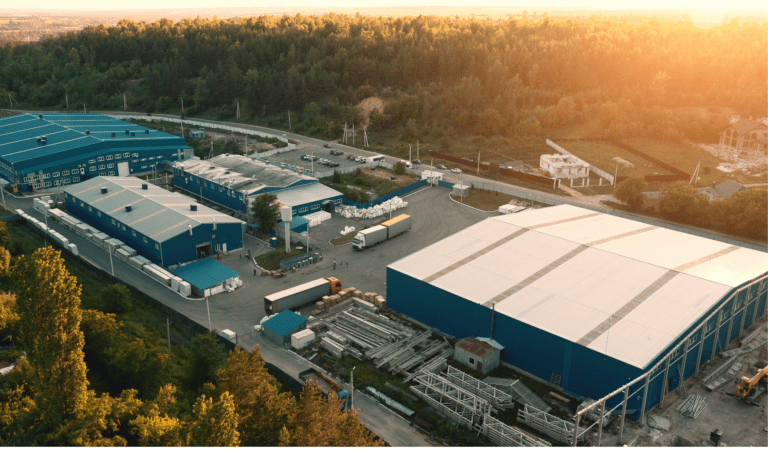The United States economy depends on trucks to deliver nearly 70 percent of all freight transported annually in the U.S., accounting for $671 billion worth of manufactured and retail goods transported by truck in the U.S. alone.
– U.S. Special Delivery
Commercial motor vehicles deliver billions of dollars of freight to United States destinations every year. Many of these loads include heavy items such as vehicles, containers, lumber, and concrete pipes. Transportation companies are responsible for ensuring that these goods are safely positioned and secured on commercial vehicles. The Department of Transportation (DOT) has established guidelines and rules to help ensure that loads are properly secured in order to prevent loads from shifting or accidentally dumped during the shipping process. Below are six DOT load securing compliance tips for companies in the transportation and construction industries.
1) BEGIN WITH A COMPREHENSIVE PRE-TRIP INSPECTION

The path to DOT load securing compliance begins with a thorough pre-trip inspection. This process can be facilitated by creating a pre-trip inspection checklist for drivers to complete prior to departure. Each pre-trip inspection should include the following measures:
-
Ensure that cargo is properly distributed and secured according to DOT standards
-
Confirm that equipment used to secure the cargo is in good working order
-
Check the vehicle to ensure that there is not anything obscuring front and side views
-
Notify the carrier of packaging flaws such as broken pallets or loose banding
2) WHEN TRANSPORTING PIPES OF DIFFERENT DIAMETERS, BE SURE TO GROUP THE PIPES ACCORDING TO DIAMETER
If pipes of more than one diameter are loaded on a vehicle, groups must be formed that consist of pipe of only one size, and each group must be separately secured.
– FMCSA
Transporting concrete pipes requires keen attention to blocking requirements and the size of the pipes being transported. When loading concrete pipes on a truck, first divide the cargo based upon the diameter of the pipes being transported. Make sure that you only include pipes of the same diameter in each group and secure each group with blocking that is securely placed against the pipe. Blocking must be firmly affixed to ensure that it does not move out from under the pipe.
3) IF YOU TRANSPORT LOGS, MAKE SURE YOUR VEHICLE IS DESIGNED FOR THAT PURPOSE
The average weight of a utility pole constructed of processed wood is 700 pounds. Freshly harvested logs can be even heavier, supporting the need for rigorous DOT standards for the safe transport of logs. Regardless of whether you are transporting freshly harvested raw logs, partially debarked logs, or fully processed logs such as utility poles, the DOT requires you to use a vehicle that has been specifically designed to transport logs. Specifically, your vehicle must feature bunks, bolsters, stakes, or another means of cradling the logs to prevent rolling. Additionally, your vehicle and its equipment must be constructed to endure expected forces without failure.
4) STABILIZE AND POSITION INTERMODAL CONTAINERS BEFORE SECURING THEM

Secure each intermodal container to the container chassis with securement or integral locking devices that cannot accidentally become unfastened. Integral locking devices do not have to be adjustable.
– FMCSA Driver’s Handbook on Cargo Securement
When loading intermodal containers onto a chassis, loading personnel should remember to take the necessary measures to balance and position a container before securing it to the chassis. When positioning the container, loaders should make sure that the container does not hang over the trailer by more than five feet on the front or end of the trailer. FMCSA suggests using secondary attachments to make sure that all latches remained securely fastened during transit.
5) POSITION LARGE BOULDERS ON THE TRUCK WITH THEIR LARGEST OR FLATTEST SIDE DOWN
Safely transporting large boulders can be challenging, especially if the boulder lacks a cubic shape or stable base. In these cases, proper positioning is the key to safely and securely transporting large boulders. Make sure you take the time necessary to identify the largest and flattest side of the boulder and place this side of the boulder directly on top of the truck bed.
Once you have achieved proper positioning, secure the boulder with at least two chain tiedowns, passing each chain over the center of the boulder to form an “X” pattern on top of the boulder. After securing the tiedowns to the vehicle, make sure to attach the tiedowns to each other at the center of the “X” with a shackle or other connector.
6) TAKE MEASURES TO PREVENT SIDE-TO-SIDE MOVEMENT WHEN SHIPPING PAPER ROLLS
If there are not enough paper rolls in the shipment to reach the walls of the vehicle, prevent side-to-side movement by one of these methods: ♦ Blocking♦ Bracing♦ Tiedowns♦ Void fillers♦ Friction mats♦ Banding the rolls together
– FMCSA Driver’s Handbook on Cargo Securement
Paper rolls can be shipped horizontally or vertically within a sided vehicle, flatbed vehicle, or curtain-sided vehicle. Load securing guidelines tend to focus on shipments of vertically loaded rolls within a sided vehicle, as this mode of shipping is the most common. Preventing load shifting is especially important when shipping paper rolls as the paper can quickly migrate from one location to another due to it’s smooth cylindrical shape.
THE BOTTOM LINE
DOT load securing compliance requires a multi-faceted approach by the transportation provider. Loading standards and guidelines will vary according to the type of goods being transported and drivers must have a strong working knowledge of the standards that apply to the type of load they are carrying. By following the load securing tips above, transportation companies can promote DOT compliance while helping to ensure that goods arrive at their intended destinations safely and securely.
We invite you to contact us to learn how we can help you comply with DOT guidelines. As a global leader in web-based compliance solutions, Whip Around can help you achieve DOT compliance by providing you with a convenient paperless reporting platform for drivers. Whether you specialize in transporting vehicles or utility poles, we can help your organization comply with DOT standards. We look forward to helping you achieve DOT compliance!




